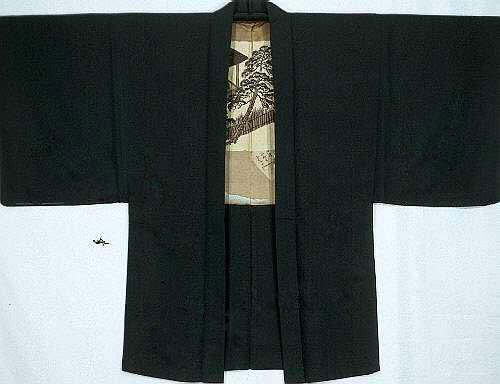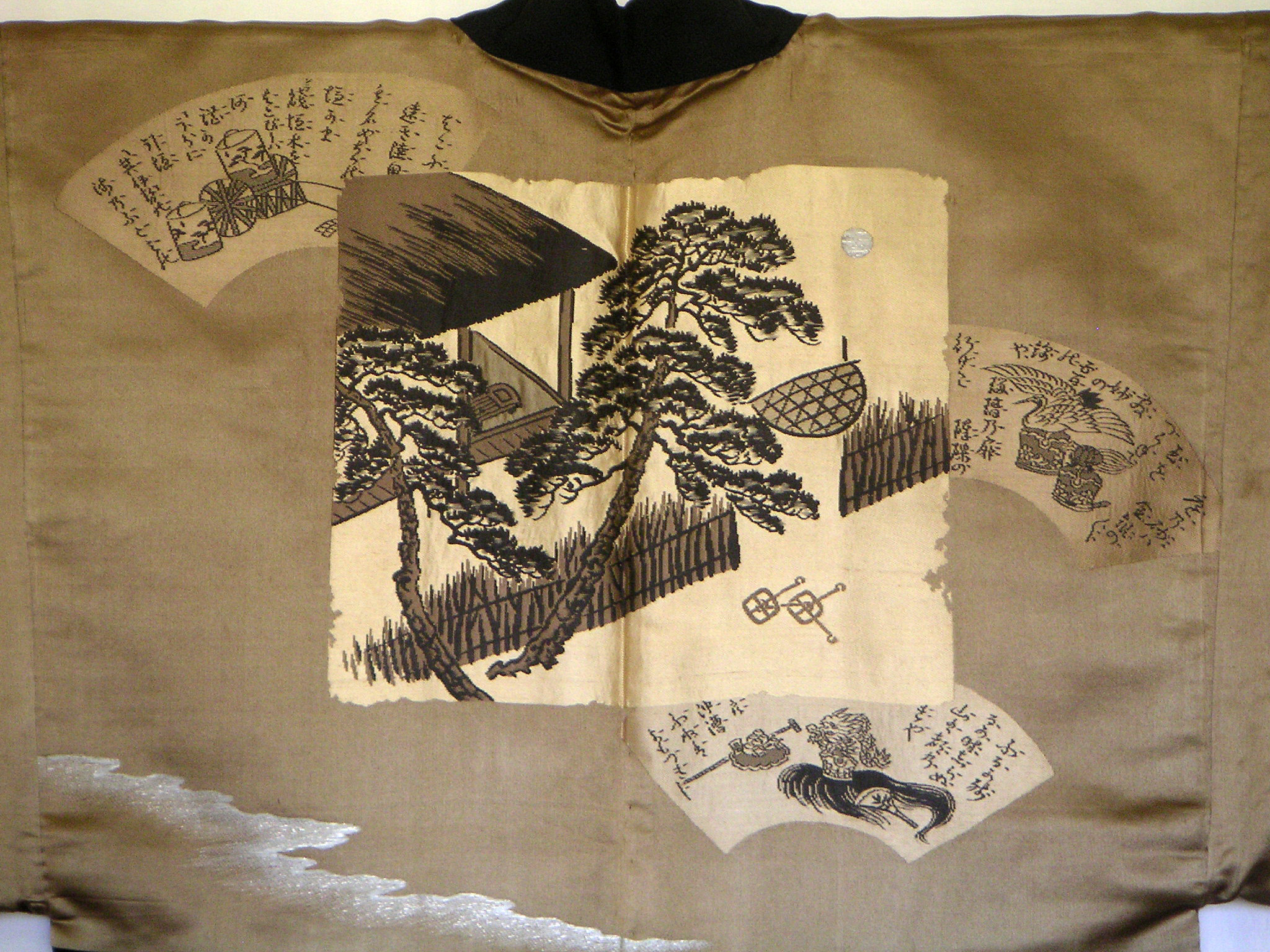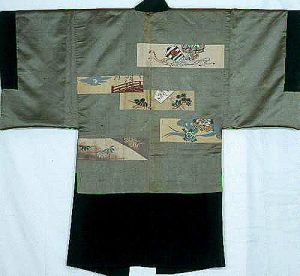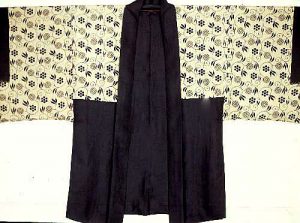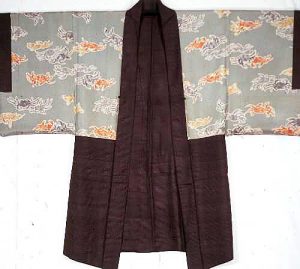Description
This is an outstanding example of the highest quality, Informal Man’s topcoat or “Haori.” It has been specially hand woven, is fully reversible, and has been sewn completely by hand both inside and out. The outer Silk is Okinawan Silk (“Kasuri Ori“)…an unrivaled silk due to the exquisite quality of the weaving. In ancient Okinawa, to envelop your body with a woven cloth represented your desire to embrace and to protect the sacred spirit concealed within the body Thus, this Haori was much more than a protective covering before the development of any aesthetic or social significance; it also expressed a religious belief. The hand woven “Kasuri Silk” weave is distinguished by silk fibers that have been tied with string in predetermined areas dictated by the ultimate desired design, then immersed in a natural dye. Combining the iron rich soil of Kume Island with the natural colors of Okinawan plants produced the famed deep black brown colors of Oshima; which, alone created many of the other variations in natural dyes. Kasuri motifs range from several inches in width and height to only a fraction of an inch. This fine fabric is greatly prized and extraordinarily expensive today, as it required a year’s work for the weaving of one garment. Oshima Island lies in Kagoshima Prefecture in the Okinawan chain of islands.
Both layers are in excellent condition, and date from before the turn of the century. obviously specially ordered for a rich and high ranking “Daimyo” (Lord) or Samurai as the center back Crest (“Mon”) is not painted on the original Silk but is woven in the piece itself. The only indication that this was a garment that the individual would have worn at home or for informal occasions is the appearance of one, rather than three or five, crests on the outside of the garment. The family crest is based on the Chrysanthemum (“Kiku“). Because of its ascribed nobility and purity, it was known as one of the “4 princes” among subjects of art. It was also know as the “longevity plant” as it was associated with Kusunoki Masashige, the Emperor Godaigo’s masterful General. By the 13th Century, the Chrysanthemum was associated with the Imperial Line and is still considered the Crest of the Royal Family.
What makes the Haori for men so intriguing is the fact that the main source of decoration is on the inside of the back panel or lining. It is this lining that determines the status of the man wearing the garment. Thus, the most spectacular of the textile artworks created from the 16th through the 19th Centuries were those intended for personal satisfaction. The inner back panel of this dramatic Haori has been woven in an intricate, and dramatic scene dominated by the large central Pine or “Matsu” which symbolized long life. The Moon (“Tsuki”), one of the most famous poetic images, in the background has been woven in pure white gold threads. Surrounding the central motif are 3 open fan (“Sensu“) insets with elaborate designs that remind one of the Immortalized One Hundred Poets, including “Kanji” ideograms or characters. The “bird’s eye” perspective is a typical Japanese artistic method for presenting a multi-dimensional landscape.
The more intricate the Silk weaving, especially with the inclusion of the written language, the wealthier the individual who commissioned it and the greater its value as a family heirloom. This magnificent weaving would have taken a Master Artisan much time and skill to complete.
A Certificate of Authenticity is included.
TTAC will personally pack and ship via UPS at company expense within the continental U.S.


